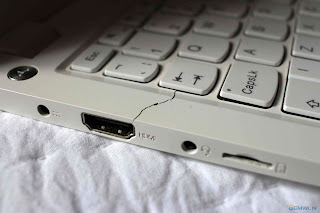Is it better to upgrade or buy a new computer?
There have been many changes in the PC
market over the past few decades, but one question remains eternal: "Can I
get more performance from the systems I now own, or do I have to build or buy
other products?"
Laptops, especially modern high-end
systems, offer far fewer upgrade options than desktops. Generally, the only
thing you can reasonably upgrade on a laptop is system RAM, possibly internal
memory, and a cooling solution obtained by adding an aftermarket laptop cooler.
These are useful in the situations discussed below, but the desktop has more
flexibility in terms of upgrades.
PC components
age differently
There was a time when the capacity and
performance of CPU, GPU, and RAM all increased rapidly compared with the same
period last year. This is no longer true. RAM capacity is constantly growing,
but since the Windows 7 era, Microsoft has been meeting most Windows system
requirements. The days when the minimum requirements for each application
version have increased dramatically are over. Single-core CPU performance
improves by only 3-5% per year. The average growth rate of GPU performance is
still above the average level, but today the growth rate is much slower than in
the past few years.
From an upgrader's perspective, this
can be a good thing-it means that your CPU and motherboard platform will last
longer and can be improved by adding faster graphics cards.
Understanding
RAM upgrades
If and only if insufficient memory
first causes performance issues, placing more memory in the system can solve
the problem of poor performance.
If you have 4GB of RAM in your system,
and the total system demand will never exceed 3GB, then increasing to 6GB will
not bring significant benefits. If you have an application that requires 6GB of
RAM and running it with only 4GB results in a large number of file palings,
then that particular application will benefit greatly from more RAM and the
performance of the remaining applications may be the same.
Unless you accidentally perform a
clock upgrade, it is hardly worth investing in a RAM clock speed upgrade. If
you have 4GB DDR3-1066 and you buy 8GB DDR3-1600 as part of the upgrade, that's
hardly a bad thing, but if you have 8GB DDR3-1066, I wouldn't spend time buying
8GB DDR3-1600. Most desktop applications are not limited by RAM bandwidth. It
is not necessary to update a DDR3 PC with acceptable performance to DDR4 just
because of DDR4.
I think 4GB of memory is currently the
minimum you want, 8GB of memory is reasonable, and 16GB of memory can cover
almost everything, except for things you may need to know. Although I
definitely don't recommend spending a lot of money on the old RAM of low-end
systems, the good news is that RAM is usually very cheap now and upgrading may
not cost a lot of money.
Identify
bottlenecks in computer acceleration
In this case, the bottleneck is not an
issue that prevents you from achieving optimal performance. It is assumed that
maximum performance will not be obtained without the purchase of new hardware.
The question is whether we can find a way to get the system to acceptable performance
for a reasonable amount.
Sometimes these situations are easy to
resolve. If you purchased a high-end desktop at the end of 2012, you may have
reasonably purchased a Core i7-2700K with 8-16GB DDR3, 256GB SSD, 650W PSU, and
2GB GTX 680. You can significantly improve performance. Buy a new GPU to
understand the entire gaming system (assuming you care about gaming). You have
enough power to power high-end cards, and the 2700K will still provide a
powerful frame rate. You may not see all the performance potential you get from
a new rig-but you will get most of it. If you choose to update other components
later, you can take your new GPU with you.
Upgrades are most effective when
specific problems can be solved accurately. Switching from HDD to SSD
will improve desktop response speed and load time for the entire system. If the
RAM of the high-end system above (such as 4GB DDR3) is unusually low, it is
well worth even today to increase it to 8GB or 16GB, especially when combined
with GPU upgrades.
This concept can also be applied to
OEM desktops. Although I didn't make any specific system recommendations,
sometimes I can still find a basic desktop with reliable components that just
need to turn the GPU into a gaming system. Sometimes these basic rigs are cheaper
than buying new components yourself. Building a basic system and integrating a
mid-range GPU into one system may be a good way to get a gaming system without
spending too much money.
If you are starting to consider an
upgrade project, be prepared to replace 80% of your laptop components. If you don't want to
have a headache for this, buying a new laptop is probably the best option.



评论
发表评论